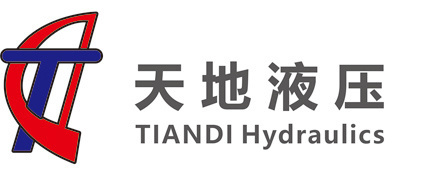GET THE LATEST NEWS FROM THE COMPANY
NEWS CATEGORY
Unlocking the Functionality of DCV Valves: A Comprehensive Guide
Published:
2025-07-16 15:00
---
DCV valves, or Directional Control Valves, are essential components in hydraulic systems, playing a crucial role in controlling the flow of fluid within various industrial applications. Understanding the function and operation of DCV valves is vital for anyone involved in the design, maintenance, or operation of hydraulic machinery.
At its core, a DCV valve directs the flow of hydraulic fluid to different actuators, such as cylinders or motors, enabling precise movement and control in industrial devices. These valves can manage multiple positions, allowing them to route fluid in ways that create specific actions within the system. For instance, a two-position DCV can activate or deactivate a cylinder, while a four-position DCV can facilitate two-cylinder movements simultaneously.
One of the key advantages of DCV valves is their ability to improve the efficiency and reliability of hydraulic systems. These valves can significantly reduce the risk of fluid leaks and ensure that the system operates smoothly under varying loads and pressures. Additionally, DCV valves often come with various actuation methods, such as manual, pneumatic, or electrical, providing flexibility in design and operation.
When selecting a DCV valve for your application, it is important to consider several factors. First, assess the flow capacity and pressure ratings required for your specific hydraulic system. Choosing a valve that can handle the maximum flow and pressure is crucial for maintaining operational efficiency and preventing potential failures.
Moreover, the valve’s size should match the existing piping and components in your system. Mismatched sizes can lead to inefficiencies and increased wear on the system. Lastly, consider the actuation method that best fits your operational requirements. For instance, electric actuation may offer precise control, while manual actuation could suffice for simpler applications.
Installation and maintenance of DCV valves also play a pivotal role in their longevity and performance. Proper installation ensures that the valve functions correctly and minimizes the risk of leaks or failures. Regular maintenance checks can help identify any issues before they escalate, prolonging the life of both the valve and the entire hydraulic system.
In conclusion, DCV valves are fundamental components in hydraulic applications, providing critical control over fluid movement. By understanding their operation and taking the time to select the right valve for your needs, you can enhance the performance and reliability of your industrial equipment. Whether you’re involved in system design, maintenance, or operation, familiarity with DCV valves will undoubtedly contribute to your success in the field.
DCV valves, or Directional Control Valves, are essential components in hydraulic systems, playing a crucial role in controlling the flow of fluid within various industrial applications. Understanding the function and operation of DCV valves is vital for anyone involved in the design, maintenance, or operation of hydraulic machinery.
At its core, a DCV valve directs the flow of hydraulic fluid to different actuators, such as cylinders or motors, enabling precise movement and control in industrial devices. These valves can manage multiple positions, allowing them to route fluid in ways that create specific actions within the system. For instance, a two-position DCV can activate or deactivate a cylinder, while a four-position DCV can facilitate two-cylinder movements simultaneously.
One of the key advantages of DCV valves is their ability to improve the efficiency and reliability of hydraulic systems. These valves can significantly reduce the risk of fluid leaks and ensure that the system operates smoothly under varying loads and pressures. Additionally, DCV valves often come with various actuation methods, such as manual, pneumatic, or electrical, providing flexibility in design and operation.
When selecting a DCV valve for your application, it is important to consider several factors. First, assess the flow capacity and pressure ratings required for your specific hydraulic system. Choosing a valve that can handle the maximum flow and pressure is crucial for maintaining operational efficiency and preventing potential failures.
Moreover, the valve’s size should match the existing piping and components in your system. Mismatched sizes can lead to inefficiencies and increased wear on the system. Lastly, consider the actuation method that best fits your operational requirements. For instance, electric actuation may offer precise control, while manual actuation could suffice for simpler applications.
Installation and maintenance of DCV valves also play a pivotal role in their longevity and performance. Proper installation ensures that the valve functions correctly and minimizes the risk of leaks or failures. Regular maintenance checks can help identify any issues before they escalate, prolonging the life of both the valve and the entire hydraulic system.
In conclusion, DCV valves are fundamental components in hydraulic applications, providing critical control over fluid movement. By understanding their operation and taking the time to select the right valve for your needs, you can enhance the performance and reliability of your industrial equipment. Whether you’re involved in system design, maintenance, or operation, familiarity with DCV valves will undoubtedly contribute to your success in the field.
dcv valve
previous page
previous page
Related news

